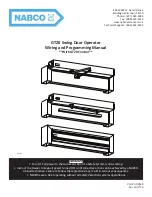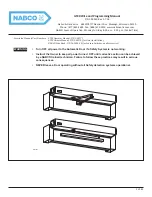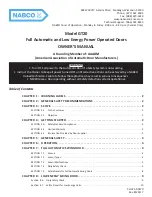
5.1
Summary
WARNING:
Before repairing unit, disable the main switch or breaker.
If the welder isn’t working normally, use the following information to pinpoint the possible cause. Compare
the trouble and symptoms with table 5-1 below. If a problem can’t be found, open and inspect all parts and
wires.
WARNING:
All electrical repairs must be done by a qualified electrician.
Table 5-1 Troubleshooting
Chapter 5 – Troubleshooting
Page 14
PROBLEM
POSSIBLE CAUSES
REMEDIES
No input
1. No voltage in input terminal.
2. Improper fuse or breaker.
3. Overload protective setting.
1. Check fuse or breaker.
2. Replace fuse or breaker.
3. Let cool for 15 min. and try
again.
Bad wire feed.
1. Not enough pressure.
2. Wing nut is too loose.
3. Wire is oxidated.
1. Tighten the impactor nut.
2. Tighten wing nut.
3. Replace the wire spool.
Current is too low.
1. Input voltage is too low.
2. Bad connection.
3. Conductor elements have
been damaged.
1. Check that the input voltage
is the same as rated voltage.
2. Check grounding cable
connection.
3. Repair by qualified electrician.
Poor gas welding
performance.
1. Little or no gas.
2. Hole is blocked.
3. Hertzian valve is blocked.
4. Bad gas and wire.
1. Check gas supply.
2. Clean with compressed air.
3. Open and check welding
torch.
4. Replace gas and wire.
When pressing switch,
unit does not work.
1. Control valve broke off.
2. Circuit plate damaged.
1. Repair valve by qualified
personnel.
2. Replace circuit plate.















































